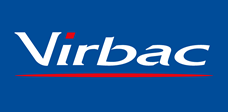Combination therapy
No results were found for your selected species
Ridaworm (2 - 4 kg)
ATC code
Species
Cats.
Indications
For the treatment of mixed infections caused by the following gastrointestinal roundworms and tapeworms:
Roundworms: Toxocara cati, Toxascaris leonina,
Tapeworms: Dipylidium caninum, Taenia taeniaeformis, Echinococcus multilocularis.
Dose to be administered and administration route
To ensure administration of a correct dose, body weight should be determined as accurately as possible.
Dosage
The recommended dose is: 20 mg/kg pyrantel (57.5 mg/kg pyrantel embonate) and 5 mg/kg praziquantel. This is equivalent to 1 tablet per 4 kg bodyweight.
|
Body weight |
Tablets |
|
1.0 - 2.0 kg |
½ |
|
Greater than 2.0 up to 4.0 kg |
1 |
|
Greater than 4.0 up to 6.0 kg |
1 ½ |
|
Greater than 6.0 kg |
2 |
Administration and duration of treatment
Single oral administration. The tablet should be given directly to the cat, but if necessary can be disguised in food.
In ascarid infestation, especially in kittens, complete elimination cannot be expected, so a risk of infection for humans can persist. Repeat treatments should, therefore, be carried out with a suitable roundworm product at 14 day intervals until 2-3 weeks after weaning.
If signs of disease persist or appear, consult a veterinary surgeon.
Adverse reactions
Mild and short-lived digestive tract disorders such as excessive salivation and/or vomiting and mild and short-lived disorders of the nervous system such as loss of balance may occur in very rare cases.
The frequency of adverse reactions is defined using the following convention:
- very common (more than 1 in 10 animals displaying adverse reaction(s) during the course of one treatment)
- common (more than 1 but less than 10 animals in 100 animals)
- uncommon (more than 1 but less than 10 animals in 1,000 animals)
- rare (more than 1 but less than 10 animals in 10,000 animals)
- very rare (less than 1 animal in 10,000 animals, including isolated reports)
Dispensing
AVM-GSL - Authorised Veterinary Medicine – General Sales ListSUMMARY OF PRODUCT CHARACTERISTICS
1. NAME OF THE VETERINARY MEDICINAL PRODUCT
Ridaworm 80/20 film-coated Tablets for Cats
2. QUALITATIVE AND QUANTITATIVE COMPOSITION
Each film coated tablet contains:
Active substance:
Pyrantel 80 mg
(equivalent to 230 mg pyrantel embonate) Praziquantel 20 mg
For the full list of excipients, see section 6.1.
3. PHARMACEUTICAL FORM
Film-coated tablets.
A white to off white round, biconvex coated tablet with a breakline on one side and plain on the other side.
The tablet can be divided into halves
4. CLINICAL PARTICULARS
4.1 Target species Cats.
4.2 Indications for use, specifying the target species
For the treatment of mixed infections caused by the following gastrointestinal roundworms and tapeworms:
Roundworms: Toxocara cati, Toxascaris leonina,
Tapeworms: Dipylidium caninum, Taenia taeniaeformis, Echinococcus multilocularis.
4.3 Contraindications
Do not use simultaneously with piperazine compounds.
Do not use simultaneously with other deworming products without veterinary advice.
Do not use in kittens less than 6 weeks of age.
Do not use in animals with known hypersensitivity to the active substances or to any of the excipients. Do not use during pregnancy.
4.4 Special warnings for each target species
Fleas serve as intermediate hosts for one common type of tapeworm – Dipylidium caninum. Tapeworm infestation is certain to reoccur unless control of intermediate hosts such as fleas, mice, etc. is undertaken.
Development of parasite resistance to anthelmintics of a certain class can occur after frequent and repeated use of an anthelmintic from that class.
4.5 Special precautions for use
Special precautions for use in animals
Not intended for use in cats weighing less than 1 kg bodyweight.
Special precautions to be taken by the person administering the veterinary medicinal product to animals
In the interests of good hygiene, persons administering the tablets directly to the cat, or by adding them to the cat’s food, should wash their hands afterwards. In case of accidental ingestion, seek medical advice and show the package leaflet to the physician.
Other precautions
Echinococcosis represents a hazard for humans. As Echinococcosis is a notifiable disease to the World Organisation for Animal Health (OIE), specific guidelines on the treatment and follow-up, and on the safeguard of persons, need to be obtained from the relevant competent authority (e. g. experts or institutes of parasitology) If the cat has visited areas where Echinococcus spp. are prevalent, a veterinarian should be consulted.
4.6 Adverse reactions (frequency and seriousness)
Mild and short-lived digestive tract disorders such as excessive salivation and/or vomiting and mild and short-lived disorders of the nervous system such as loss of balance may occur in very rare cases.
The frequency of adverse reactions is defined using the following convention:
- very common (more than 1 in 10 animals displaying adverse reaction(s) during the course of one treatment)
- common (more than 1 but less than 10 animals in 100 animals)
- uncommon (more than 1 but less than 10 animals in 1,000 animals)
- rare (more than 1 but less than 10 animals in 10,000 animals)
- very rare (less than 1 animal in 10,000 animals, including isolated reports)
4.7 Use during pregnancy, lactation or lay
Do not use during pregnancy but may be used during lactation.
4.8 Interaction with other medicinal products and other forms of interaction Do not use simultaneously with piperazine compounds.
4.9 Amounts to be administered and administration route
To ensure administration of a correct dose, body weight should be determined as accurately as possible.
Dosage
The recommended dose is: 20 mg/kg pyrantel (57.5 mg/kg pyrantel embonate) and 5 mg/kg praziquantel. This is equivalent to 1 tablet per 4 kg bodyweight.
|
Body weight |
Tablets |
|
1.0 - 2.0 kg |
½ |
|
Greater than 2.0 up to 4.0 kg |
1 |
|
Greater than 4.0 up to 6.0 kg |
1 ½ |
|
Greater than 6.0 kg |
2 |
Administration and duration of treatment
Single oral administration. The tablet should be given directly to the cat, but if necessary can be disguised in food.
In ascarid infestation, especially in kittens, complete elimination cannot be expected, so a risk of infection for humans can persist. Repeat treatments should, therefore, be carried out with a suitable roundworm product at 14 day intervals until 2-3 weeks after weaning.
If signs of disease persist or appear, consult a veterinary surgeon.
4.10 Overdose (symptoms, emergency procedures, antidotes), if necessary After doses higher than 5 times the recommended dose, signs of intolerance such as vomiting have been observed.
4.11 Withdrawal period(s) Not applicable.
5. PHARMACOLOGICAL PROPERTIES
Pharmacotherapeutic group: Anthelmintics, praziquantel combinations. ATC vet code: QP52AA51
5.1 Pharmacodynamic properties
This product contains anthelmintics active against gastrointestinal roundworms and tapeworms. The product contains two active substances, as follows:
1. Pyrantel embonate (pamoate), a tetrahydropyrimidine derivative and 2. Praziquantel, a partially hydrogenated pyrazinoisoquinoline derivative.
Pyrantel acts as a cholinergic agonist. Its mode of action is to stimulate nicotinic cholinergic receptors of the parasite, induce spastic paralysis and thereby allow expulsion from the gastro-intestinal (GI) system by peristalsis.
Praziquantel is very rapidly absorbed and distributed throughout the parasite. Both in vitro and in vivo studies have shown that praziquantel causes severe damage to the parasite integument, resulting in contraction and paralysis. There is an almost instantaneous tetanic contraction of the parasite musculature and a rapid vacuolization of the syncytial tegument. This rapid contraction has been explained by changes in divalent cation fluxes, especially calcium.
In this fixed combination, pyrantel is active against the following ascarids: Toxocara cati, and Toxascaris leonina. Praziquantel is effective against tapeworms in particular Dipylidium caninum and Taenia taeniaeformis.
Since it contains praziquantel, the product is effective against Echinococcus multilocularis.
5.2 Pharmacokinetic particulars
Praziquantel is rapidly absorbed, metabolised and distributed in the body. It is also believed to be excreted back into the intestinal lumen by the mucous membrane. Following administration of the product to cats, peak plasma concentrations of praziquantel were achieved by approximately 2 hours.
Pyrantel is poorly absorbed so it is expected that a large proportion of the administered dose remains in the GIT where it exerts its therapeutic effect and it is excreted largely unchanged in the faeces.
Following administration of the product to cats, peak plasma concentrations of pyrantel were achieved by approximately 3 hours.
6. PHARMACEUTICAL PARTICULARS
6.1 List of excipients Core tablet:
Maize starch,
Microcrystalline cellulose,
Crospovidone,
Magnesium stearate,
Colloidal anhydrous silica,
Film coat
Grilled meat flavour
Opadry Complete Film Coating System 03F28415 White consisting of HPMC 2910 /Hypromellose (E464), Macrogol/PEG 4000 (E1521) Titanium Dioxide (E171).
6.2 Major incompatibilities Not Applicable
6.3 Shelf life
Shelf life of the veterinary medicinal product as packaged for sale: 4 years
6.4 Special precautions for storage
This veterinary medicinal product does not require any special temperature storage conditions
Discard any unused half tablets immediately.
Do not remove tablets from immediate packaging until require for use. Keep blister in the outer carton.
6.5 Nature and composition of immediate packaging The product is presented in either:
Individual blisters made up of a PVC/PE/PCTFE white opaque copolymer and a
20µm heatseal lacquer/aluminium containing 2, 4, 6, 8, 10, 12, 14, 16, 18 or 20 tablets.
or
Individual blisters made up of 45µm PVC/aluminium/orientated polyamide and a 20µm heatseal lacquer/aluminium containing 2 or 4 tablets.
The blisters are packed into cartons containing either: 2 or 4 tablets
Not all pack sizes may be marketed.
6.6 Special precautions for the disposal of unused veterinary medicinal products or waste materials
Any unused veterinary medicinal product or waste materials derived from such veterinary medicinal product should be disposed of in accordance with local requirements
7. MARKETING AUTHORISATION HOLDER
C&H Generics Ltd c/o Michael McEvoy and Co
Seville House
New Dock Street
Galway
Ireland
8. MARKETING AUTHORISATION NUMBER
Vm 40162/4008
9. DATE OF FIRST AUTHORISATION
19 March 2015
10. DATE OF REVISION OF THE TEXT
April 2020 
Approved: 01 April 2020
 TRUSTED SOURCE
TRUSTED SOURCE









